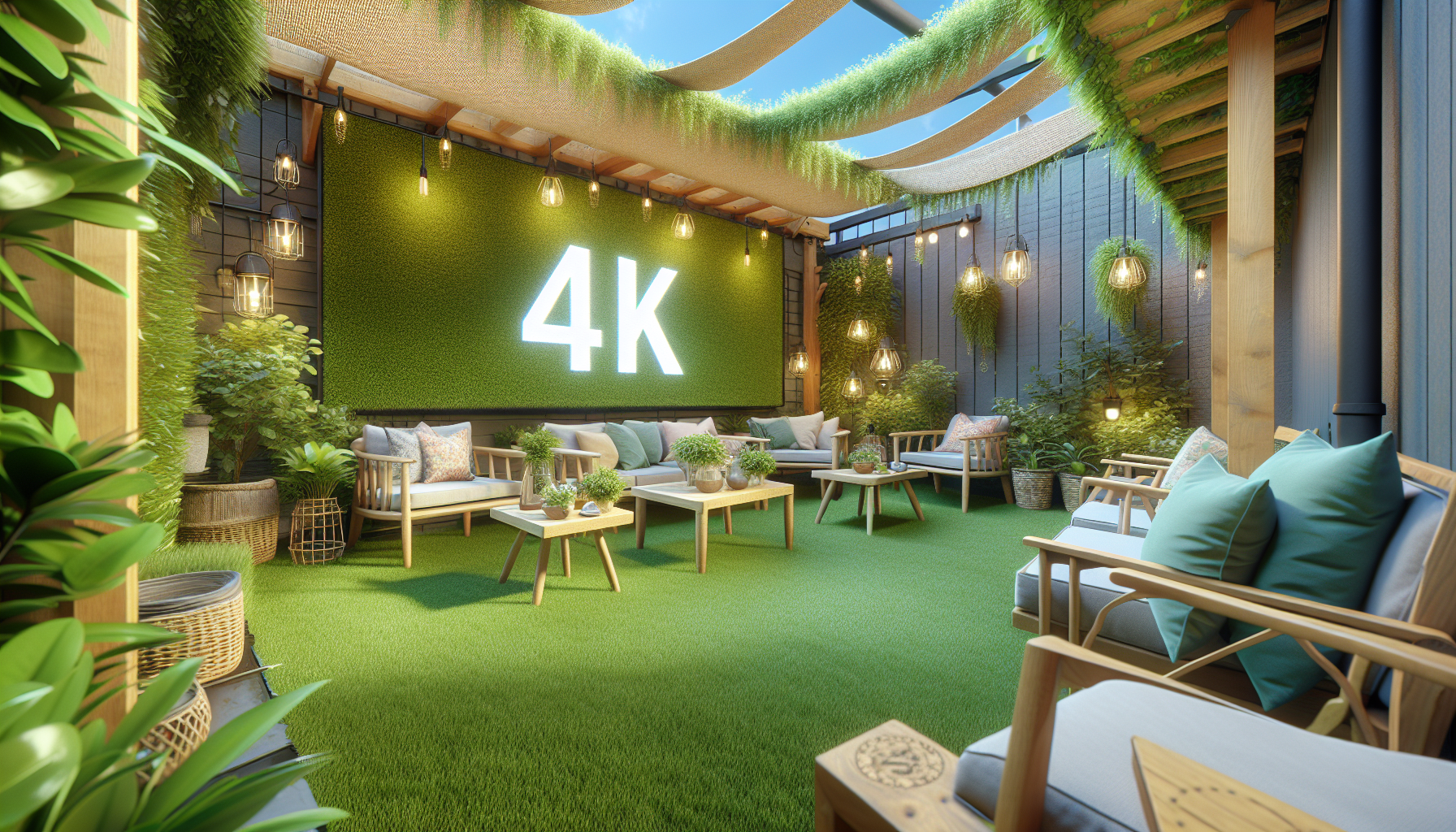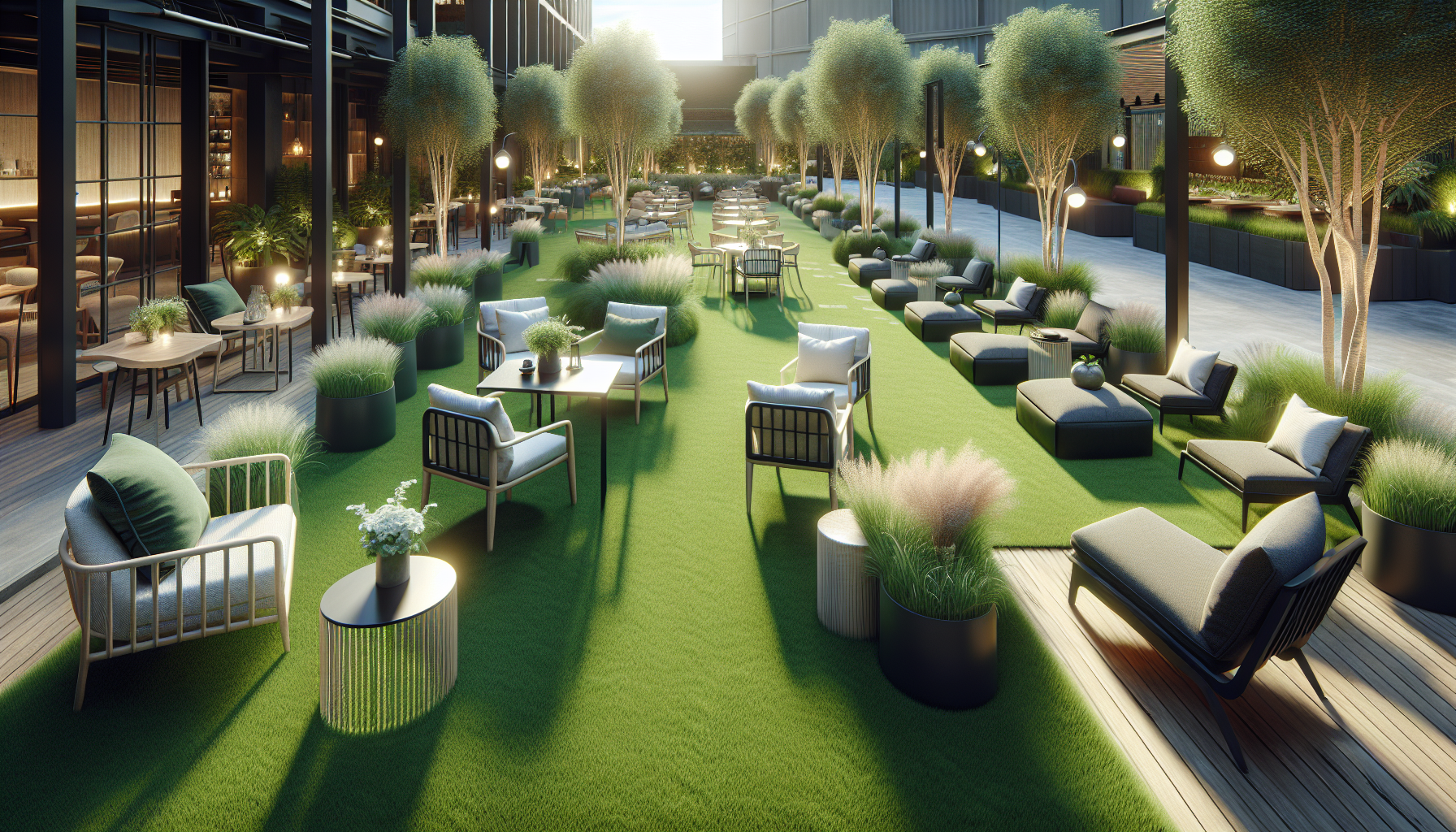
Artificial grass has rapidly gained popularity as a viable alternative to natural lawns. Understanding the lifespan of synthetic turf, also known as the lifespan of artificial grass, is crucial for homeowners and businesses alike.
Various factors can influence the durability and longevity of artificial grass, ensuring a long lifespan for synthetic turf.
These factors include the quality of materials used, installation techniques, environmental conditions, and the level of usage and foot traffic.
Opting for high-quality artificial grass and employing proper installation methods can significantly extend the lifespan of synthetic turf.
Regular maintenance plays a vital role in preserving the condition and lifespan of artificial grass. This includes regular maintenance and proper care to prolong the lifespan of synthetic turf.
Factors affecting lifespan of synthetic turf
To ensure the longevity of synthetic turf, it is essential to choose high-quality synthetic grass. Understanding the composition and construction of synthetic turf is also crucial in determining its longevity.
Factors like proper ground preparation, professional installation, regular cleaning, and debris removal play a significant role in extending the lifespan of synthetic turf.
Managing environmental factors such as climate, UV radiation, heat, cold, rainfall, and drainage systems can impact the lifespan of the turf.
Understanding the intended purpose and level of traffic and implementing measures to reduce wear and tear are also vital. Reviewing warranty terms and setting realistic expectations regarding the durability of faux grass and the lifespan of synthetic turf are key considerations

Comparison of durability faux grass vs natural grass
In this section, we will discuss the comparison of durability between faux grass (artificial grass) and natural grass, with a focus on the longevity of fake lawn. We will analyze the factors that affect their lifespan, longevity, and durability, providing a unique perspective on their performance under various conditions.
Natural grass possesses several general attributes that contribute to its durability.
It has the ability to self-repair, adapt to different climates, and respond to natural elements.
On the other hand, faux grass exhibits characteristics such as resistance to drought, low-maintenance requirements, and a consistent appearance.
Durability is influenced by various factors for both types of grass.
Climate, usage, maintenance, and installation quality affect the durability of both faux and natural grass. Natural grass can be a great alternative to fake lawn, especially for those who value the longevity of their outdoor space.
Facts Supporting the Durability Comparison between Faux Grass and Natural Grass
- Natural grass has the ability to self-repair, making it more durable in the long run.
- Faux grass is resistant to drought, ensuring its longevity even in dry climates.
- Maintenance requirements for faux grass are significantly lower compared to natural grass, contributing to its durability.
- The consistent appearance of faux grass makes it a durable option for maintaining an aesthetically pleasing outdoor space.
Expected lifespan of fake lawn
Artificial grass has gained popularity due to its effortless beauty and low-maintenance nature. Understanding the expected lifespan of artificial turf is crucial before making a decision.
Several factors can affect the longevity of synthetic grass, including the quality of materials used and proper installation techniques.
The amount and type of foot traffic also play a significant role in the wear and tear of the fake lawn.
Different climates, exposure to UV rays, and other environmental factors can impact the lifespan of artificial turf. By considering these factors, you can maximize the lifespan of your fake lawn, ensuring lasting beauty for years to come.
The expected lifespan of artificial turf varies depending on various factors, but with proper care and maintenance, it can last up to 15-20 years. Quality plays a vital role in determining the lifespan of artificial turf.
Durability comparison synthetic grass vs real grass
Durability is a crucial factor to consider when comparing the durability of synthetic grass and real grass. The growing popularity of synthetic grass necessitates a fair comparison that aligns with the header title:.
Several factors affect the longevity and sustainability of both options.
Environmental impact, such as sunlight, temperature, and rainfall, plays a significant role in determining the durability of both synthetic and real grass.
Foot traffic and sports activities, which contribute to the usage intensity, can also impact the overall durability.
Maintenance practices like watering, mowing, and fertilization are key factors to consider.
These practices influence the durability of both synthetic grass and real grass. Different types of synthetic grass vary in durability.
Facts Supporting the Durability Comparison of Synthetic Grass vs Real Grass
- Synthetic grass is designed to withstand harsh environmental conditions such as extreme sunlight, high temperatures, and heavy rainfall, making it highly durable.
- Real grass can be affected by foot traffic and sports activities, leading to wear and tear and reduced durability over time.
- Maintenance practices like watering, mowing, and fertilization are necessary for both synthetic and real grass to maintain their durability.
- Different types of synthetic grass vary in durability, with some being more resilient and long-lasting than others.
Tips for extending the lifespan of faux turf
Faux turf, also known as artificial turf, is a synthetic alternative to natural grass that provides numerous benefits for homeowners. Ensuring the long lifespan of faux turf is crucial for homeowners looking to enjoy its advantages for years to come.
By following the right maintenance tips, you can extend the lifespan of faux turf and keep it looking its best.
One important tip for extending the lifespan of faux turf is to prioritize proper installation.
The groundwork should be thoroughly prepared before laying the turf to create a solid foundation. Correctly laying the turf is also essential to avoid any future problems.
To achieve optimal installation results, it is advisable to hire a professional who specializes in faux turf installation. Their expertise will ensure the lifespan of faux turf.
Comparison of durability fake grass vs natural grass
When comparing the durability of fake grass vs natural grass, it is important to consider various factors. Fake grass is known for its long-lasting nature, thanks to the durability of fake grass materials used in its construction.
Regular maintenance practices can further enhance its longevity.
Addressing common concerns about potential wear and tear, as well as debunking misconceptions about the durability of fake grass lifespan, can provide reassurance to homeowners.
On the other hand, natural grass has a natural lifespan that can be influenced by factors like climate, soil conditions, and maintenance. Regular upkeep is essential to keep natural grass in good condition, including pest control and disease prevention. By comparing the durability of fake grass with other options, considering advantages, disadvantages, cost implications, and environmental impact.
| Fake Grass | Natural Grass |
|---|---|
| Long-lasting nature | Natural lifespan influenced by various factors |
| Durability of materials used | Requires regular upkeep for good condition |
What to expect in terms of synthetic lawn longevity
Synthetic lawns have gained increasing popularity due to their longevity, durability, and low maintenance requirements. The longevity of synthetic lawns depends on various factors, including the quality of materials used in manufacturing, installation techniques, maintenance practices, and environmental conditions.
Typically, synthetic lawns can last anywhere from 10 to 20 years, but this longevity of synthetic lawn lifespan can be influenced by factors such as foot traffic, UV exposure, and extreme weather conditions.
To ensure the longevity of synthetic grass, proper maintenance is crucial.
Regular cleaning, proper drainage to prevent water damage, and adherence to maintenance guidelines provided by reputable synthetic lawn providers can help extend the lifespan of synthetic lawns. In terms of synthetic lawn longevity, it is important to consider factors such as maintenance and quality.
Factors impacting the durability of artificial grass
Artificial grass, also known as faux lawn, is gaining popularity as a low-maintenance alternative to natural lawns. The durability of faux lawn depends on several key factors that impact its lifespan and overall performance.
The quality of materials used in manufacturing plays a crucial role in ensuring the longevity of artificial grass.
By using high-quality materials, such as durable fibers and sturdy backing, the overall durability of faux lawn can be significantly improved.
Proper installation techniques are also important when it comes to enhancing the durability of artificial grass. Incorrect installation can lead to issues such as uneven surfaces, poor drainage, and improper seaming, which can cause damage over time. To ensure the durability of faux lawn, regular maintenance and proper care are essential.
Factors Impacting the Durability of Artificial Grass
- The quality of materials used in manufacturing artificial grass is crucial for its longevity and overall performance.
- Using durable fibers and sturdy backing significantly improves the durability of faux lawn.
- Proper installation techniques, such as ensuring even surfaces, good drainage, and proper seaming, are important for enhancing the durability of artificial grass.
- Regular maintenance and proper care are essential to ensure the durability of faux lawn.
DIY Artificial Grass Installation Is it Possible
The Key Component Underneath Artificial Grass
